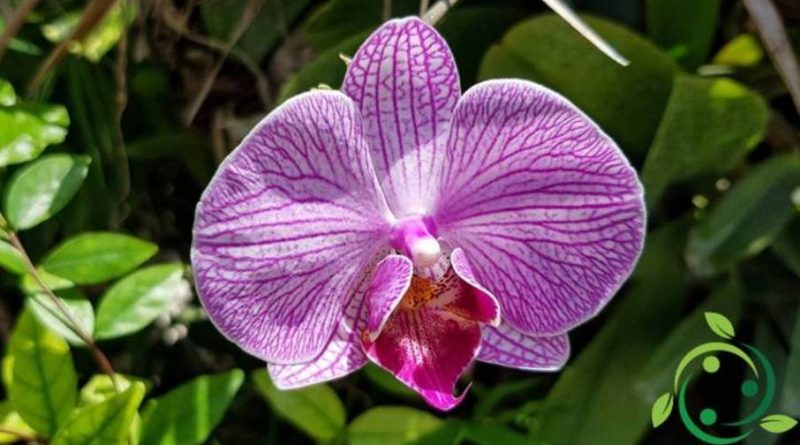How to grow Phalaenopsis
How to grow Phalaenopsis
The Phalaenopsis (Phalaenopsis Blume, 1825) are a genus of orchids that includes about fifty species, native to Asia and the archipelagos of the Pacific Ocean and the Indian Ocean. These are epiphytic plants, which in nature grow on the bark of trees, characterized by large and fleshy leaves and multicolored flowers, sometimes of considerable size (even more than 10 cm in diameter), often very long lasting both on the plant and cut. These flowers are variously colored, they have very different aspects between species and species but can often boast large dimensions and always a remarkable exotic beauty. They are located along the floral stems, which grow from the stem, and grow in the direction of light.
In this sheet we will see how to grow Phalaenopsis, considering that it is definitely the most widespread Orchid and marketed in Italy.
These are plants that, if well cultivated and positioned in the suitable environment, have a long flowering life, which in some species, such as Cimbidium, can last up to two months; this because they are pollinated by entomophilous (insects) tend to remain open for as long as possible to increase the possibility of pollination.
Because of its physiological characteristics, Phalaenopsis must be grown in the apartment because it fears the cold, it can grow outdoors but only in summer and of course with the climate of southern Italy. It is a plant that also wants light but without direct sun, an airy environment but without cold currents in the presence of good atmospheric humidity, so in the apartment we must recreate the same original conditions of growth of these tropical plants that grow on the bark of the trees.
These orchids, in the nurseries, are grown on substrates based on fir bark (called bark), but other porous materials can also be used, such as expanded clay. However, it is advisable to keep the substrate of bark, to avoid suffocating the roots that grow freely in nature. This substrate is very draining and avoids water stagnations that are lethal to the roots of the Orchids.
In an apartment the best conditions of humidity are in the bathrooms, so this is the ideal place to place them; if, of course, we want to keep them in other environments where we can observe them more often, we must keep these orchids away from radiators that drastically reduce moisture. We must also use a saucer containing some expanded clay with a finger of water, on which we will place the Orchid vase; in this way we will keep the roots away from the stagnation of water. This layer should be restored as it evaporates. Especially during the warmer months, it is very important to vaporize water on the foliage, without wetting the flowers, even every day; the water to be used must be deionized as it is free of chlorine which is very harmful to the plant.
Regarding the irrigation of Phalaenopsis, the best solution is to fill a bucket or a sink with water and to dip the pot with the plant, taking care not to let the bark come out; you have to leave the plant in the water for 15 minutes, so that the bark is soaked with water, then you have to let it drain for an hour. This procedure can be repeated once every 15 days, taking care during the summer to intervene also with the vaporization of the leaves and roots. This operation should be done in the morning, to take advantage of the heat of the sun to accelerate evaporation and create the right level of humidity.
The fertilizing technique is also important for optimal growth. In this sense, given the delicacy of the plant, it is necessary to use the specific liquid fertilizers for Orchids, which provide the right nourishment both for the vegetative development of the leaves and for the flowering. In this case it is sufficient to dilute the liquid fertilizer in water and vaporize it on the roots. Fertilization should be repeated once every 15 days. This operation should never be done before watering, to avoid removing the fertilizer just administered.
With regard to repotting; this operation is carried out only for adult specimens and when necessary. There are three cases where repotting is necessary: when the roots come out of the pot, when the bark decomposes and must be replaced and if there are parasites in the pot. It is advisable to use a transparent pot with drainage holes (therefore in plastic): the roots of the Phalaenopsis have green streaks that demonstrate a chlorophyll photosynthesis activity, which will be inhibited with a non-transparent vessel. When repotting, remember to wet the roots to make them more elastic: the roots are very delicate and the repotting must be done carefully to avoid damaging them. Perform this operation after flowering to prevent root manipulation from inhibiting it.
The Phalaenopsis plant blooms in the period from November to April and it is not easy to make it bloom again, because it always manages to grow in ideal conditions. Unlike the common Orchids that when they fade, the branch must be cut over the first or second “eyelash” of the branch, that is the typical bottlenecks of the branch of this plant, to stimulate the growth of a new branch of flowers the following year. Phalaenopsis can be kept on the branch, since the new flowers can also be born from there.
A warning: if the buds fall without opening, it means that you have to move the Phalaenopsis to a brighter or more humid place, if instead flowers and leaves suddenly collapse, the plant has probably taken a cold hit.

